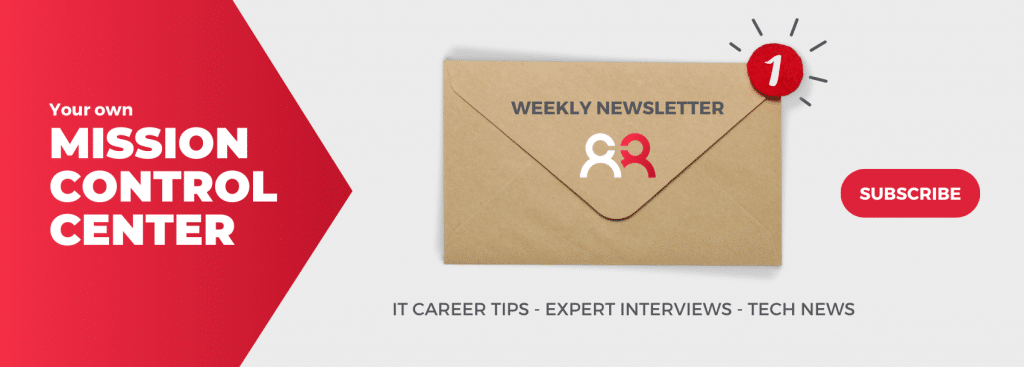Use our template to create a compelling and comprehensive Creative Technologist job description to attract top talent.
When it comes to creating new marketing strategies, brands know they need to invest in emerging technologies to stand out from the competition. They are therefore constantly looking for digital experiences combining emotion and innovation. Tt is in this kind of context indeed that they seek the help of a Creative Technologist.
The Creative Technologist plays a big role in the digitalisation of an agency or a brand. Their main mission is to help position brands through technology and innovation. It is a hybrid job requiring skills in technology, marketing and design.
Interested in exploring more roles within tech? Take a look at the role of the Salesforce Consultant
What is the role of a Creative Technologist?
Keep up with tech trends
The first mission of the Creative Technologist is to keep abreast of the latest technologies, trends and industry events. That is to say, everything a specialist in innovation should be aware of.
Understand the organisation and manage information
Moreover, they must have a good understanding of the company’s culture to be able to ensure proper distribution of information within the company and with the outside world.
They know how to manage a project internally as well as externally, ensuring that information always flows correctly between the different teams.
Invent, experiment and create prototypes
The Creative Technologist must also be able to deliver innovative ideas by going beyond traditional means. They must know how to design digital solutions and imagine how they could be used by the company.
After having experienced with a piece of software, an application or a service, they must make prototypes (demos) to present them internally or to their client.
Required skills
Communication skills
The Creative Technologist is in constant contact with the marketing department and teams of developers or creatives. They are also called upon to meet with multiple interlocutors during presentations, site visits and calls for tenders. Therefore, they must be able to introduce a technology or solution in an educational way and convince the audience of its advantages.
Ability to anticipate and estimate
The Creative Technologist must be able to estimate the costs generated by the digital products and uses they propose. Before the project materializes, they must anticipate all stages, from pre-production to daily operations, to identify any problems that may prevent the idea or project from working.
Strong technical background
The Creative Technologist must have very good knowledge of computer languages and software, as well as master digital communication techniques. They are often coders and computer scientists.
Within the industry
The profession of Creative Technologist is halfway between design and research and requires great versatility. Although Creative Technologists are still relatively few, their future is very promising in digital and general communication agencies. Their expertise is increasingly important to companies that need to be able to quickly respond to new and evolving consumer trends.
Salary
The average daily rate of a Creative Technologist is between €800 and €1,500.
Training
There is no specific training at this time for the role of Creative Technologist. The profession is accessible to IT professionals (project managers, developer, etc.) and communication professionals, requiring solid experience and strong technical and digital skills. However, a college degree is highly recommended. Advanced knowledge of UX (User Experience), ergonomics, information architecture, development, graphics, and marketing and communications are highly appreciated.
In terms of career development, there is no clear path: the Creative Technologist follows the evolution of market needs, the movement of technological innovations and current cultural trends while trying to anticipate the future.
Also discover the other Project Managements roles and career paths























